Taste of the Wild Dog Food Review
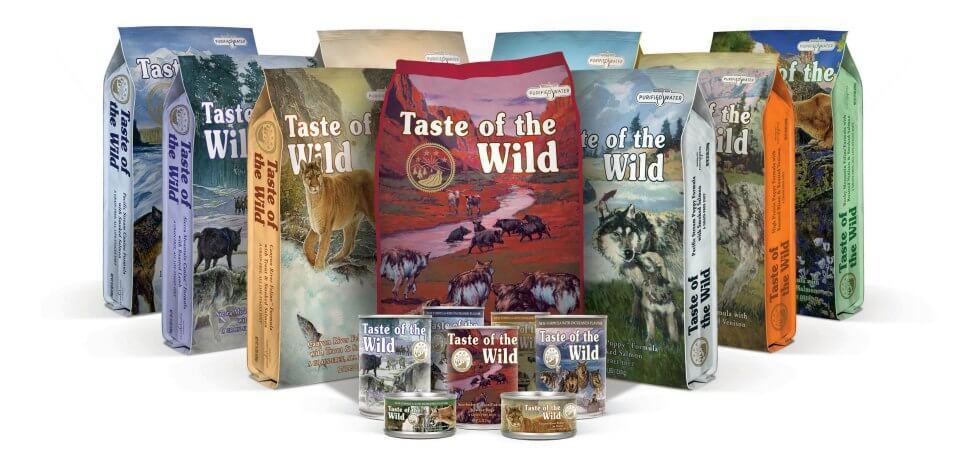
DogFoodAdvisor is reader supported See how
All reviews are 100% impartial but if you buy using links on this page, we may earn a referral fee.
In this review… The Dog Food Advisor takes an in-depth look at Taste of the Wild Dog Food… and its 4 most popular sub-brands.
We’ll also reveal…
Is Taste of the Wild made in the United States?
Has Taste of the Wild been recalled?
Which flavors and recipes get our top ratings?
But first…
Which Sub-Brand Is Right for You?
Here are Taste of the Wild’s 4 most popular sub-brands. Some are wet. Most are dry. Some are made with grain. Others are grain-free.
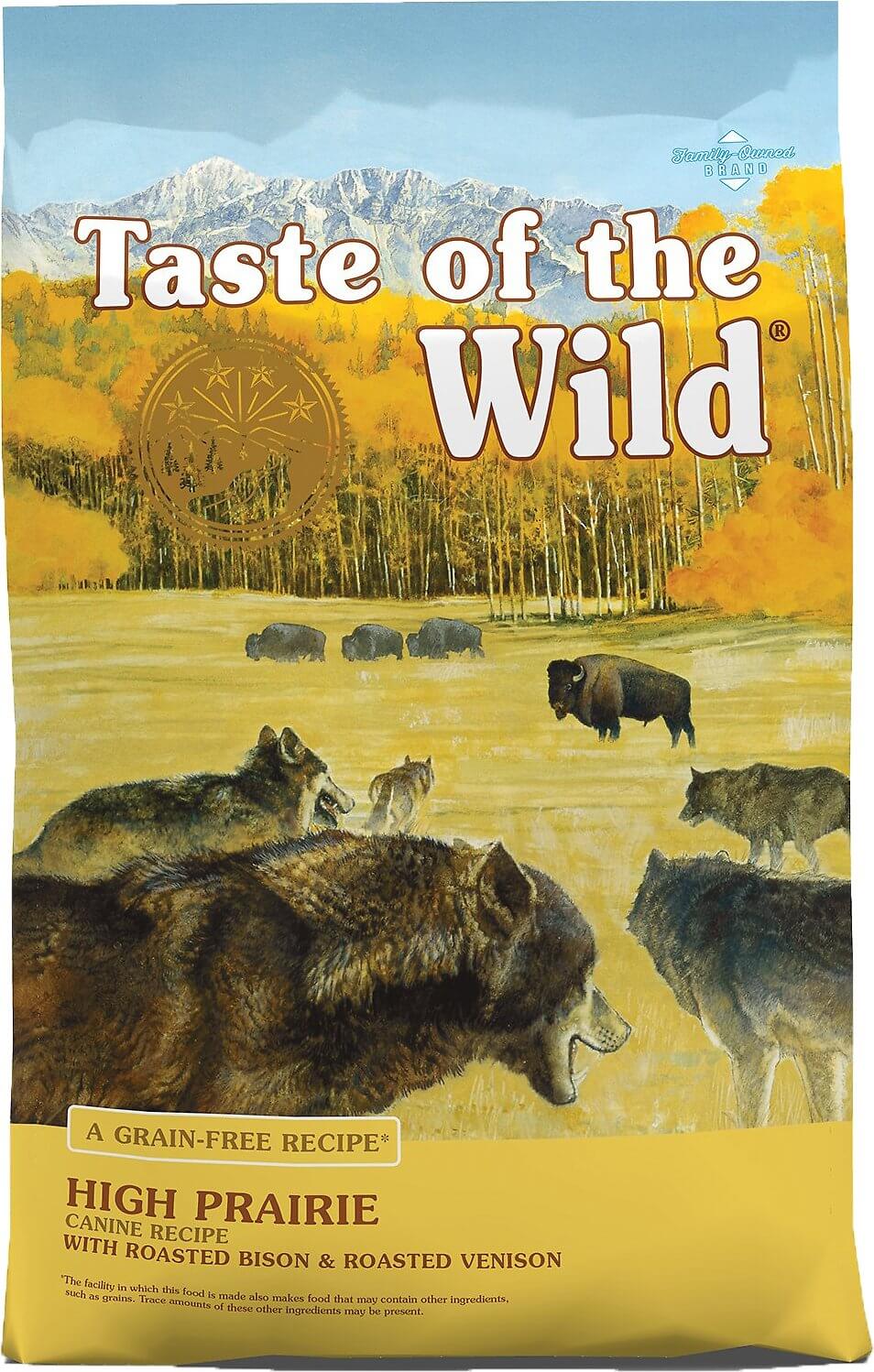
Taste of the Wild Grain-Free
Taste of the Wild Grain-Free is for those who prefer a dry food that contains no cereal grains.
- TOTW’s most popular sub-brand
- No corn, wheat, barley or rice
- 32% protein, brand average
- 9 recipes (ratings vary)
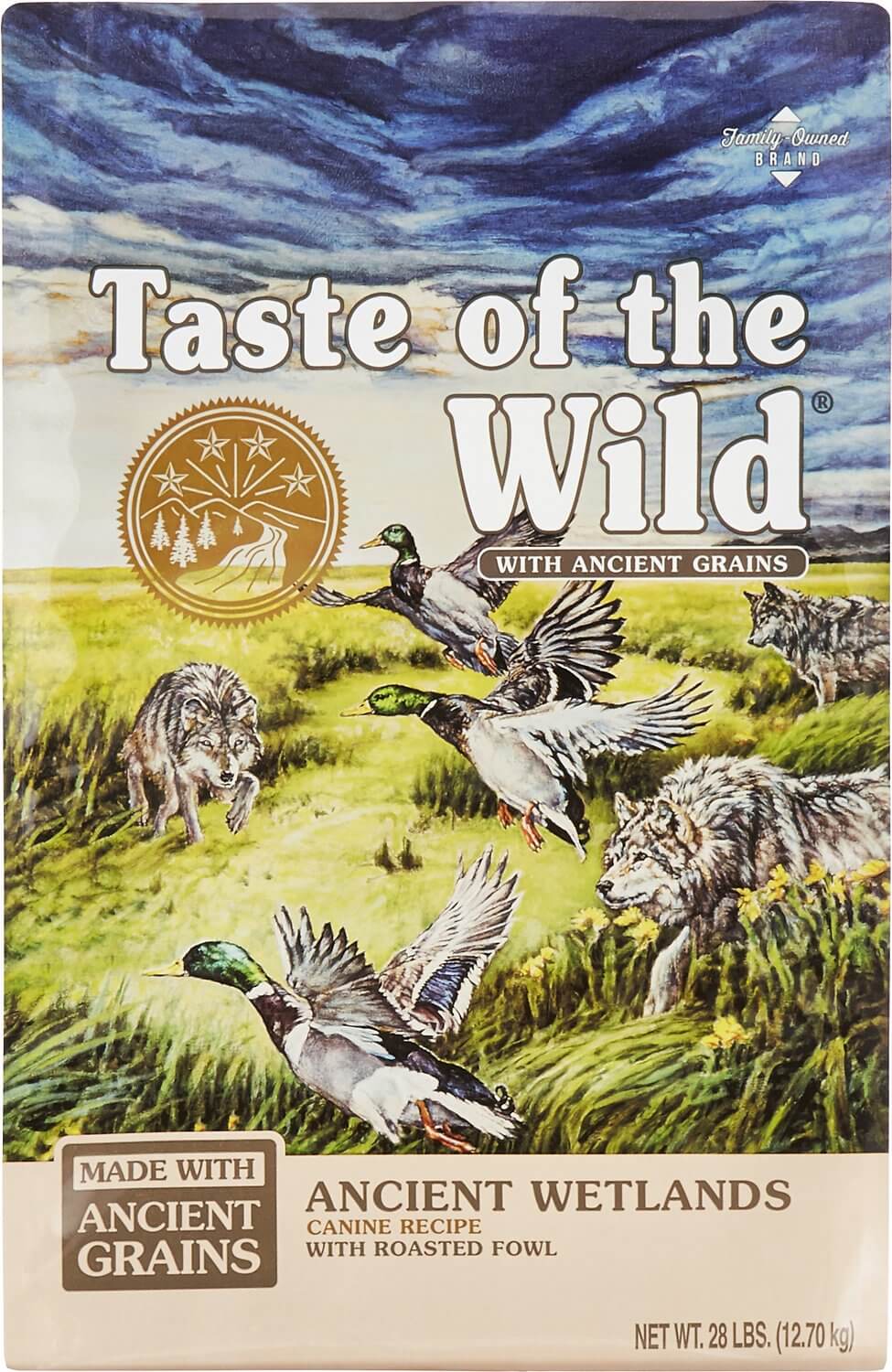
Taste of the Wild with Ancient Grains
Taste of the Wild with Ancient Grains is ideal for those seeking a dry kibble containing classic cereal grains.
- Traditional grain-inclusive design
- 33% protein, 41% carbs
- 4 recipes (ratings vary)
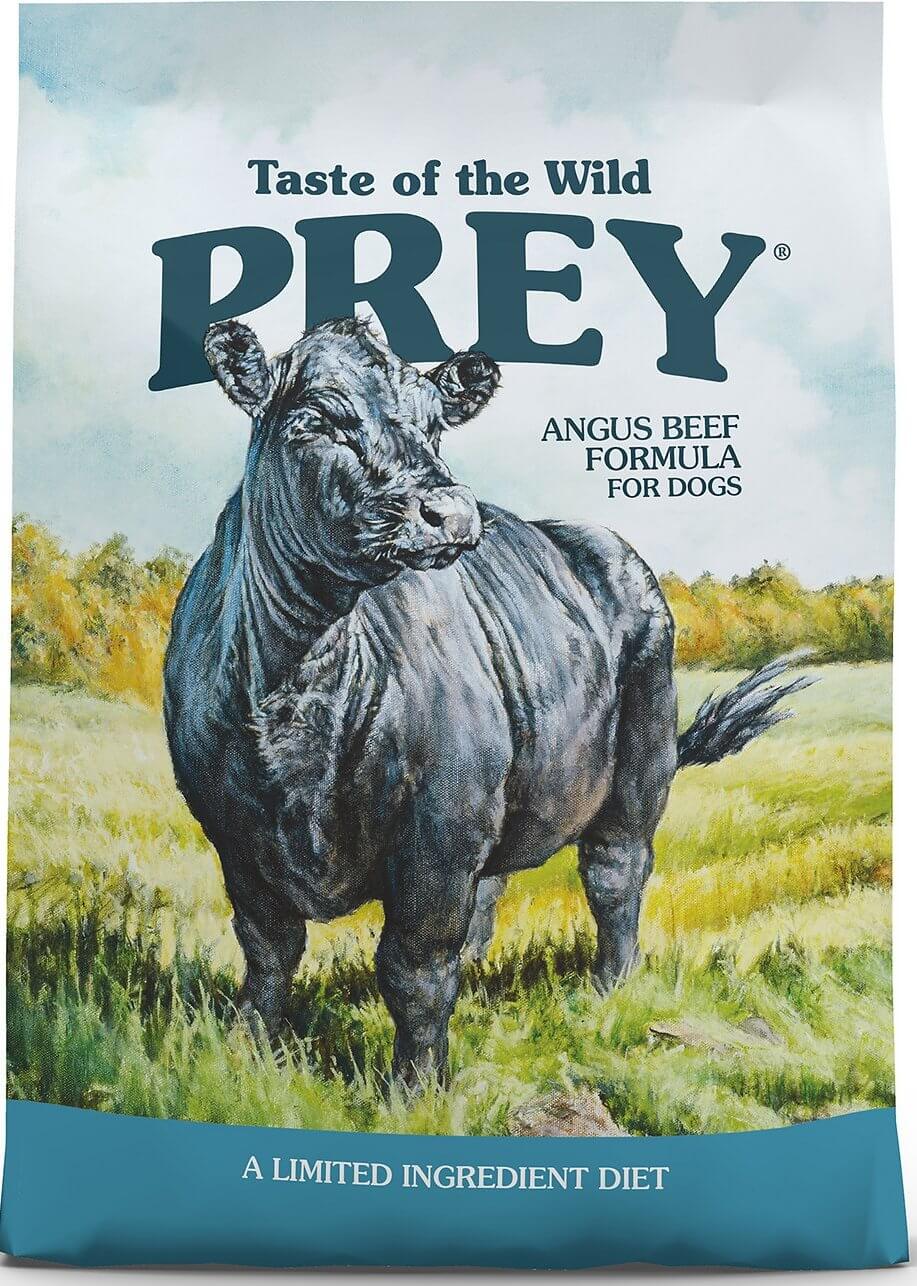
Taste of the Wild Prey
Taste of the Wild Prey is a limited ingredient diet… ideal for dogs with food sensitivities and allergies.
- Grain-free formula
- No corn, rice, wheat or barley
- Beef, turkey or trout protein
- 5 recipes
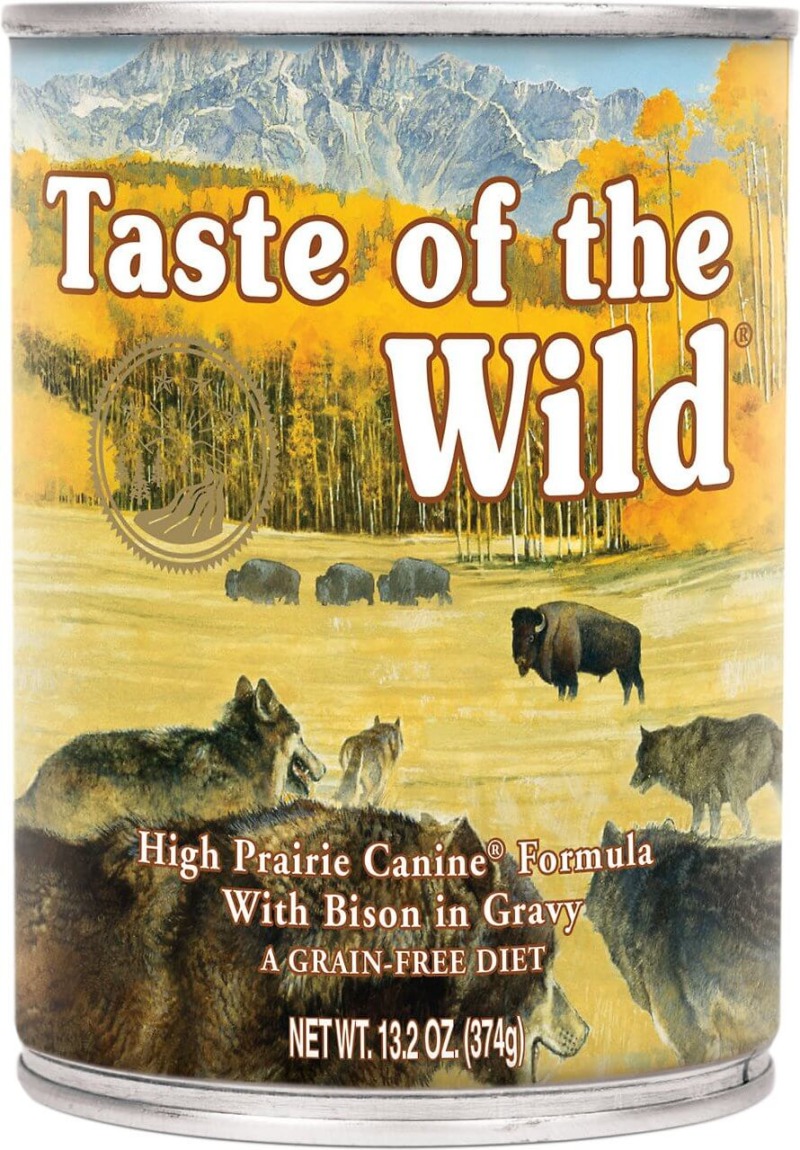
Taste of the Wild Cans
Taste of the Wild’s only wet dog food. It’s grain-free and makes a good topper for dry kibble.
- 45% protein, brand average
- 26% estimated carbs
- No BHA, BHT or other high risk preservatives
- 5 recipes (ratings vary)
Is Taste of the Wild a Good Dog Food?

Taste of the Wild Dog Food earns The Advisor’s second-highest tier rating of 4.5 stars.
Individual Recipe Ratings
The Taste of the Wild Grain-Free product line includes the 9 dry dog foods listed below.
Each recipe includes its AAFCO nutrient profile: Growth (puppy), Maintenance (adult), All Life Stages, Supplemental or Unspecified.
Recipe and Label Analysis
Taste of the Wild High Prairie Formula was selected to represent the other products in the line for detailed recipe and nutrient analysis.
Taste of the Wild High Prairie Formula
Estimated Dry Matter Nutrient Content
Protein
Fat
CarbsCarbohydrates
Water buffalo, lamb meal, chicken meal, sweet potatoes, peas, potatoes, chicken fat (preserved with mixed tocopherols), egg product, roasted bison, roasted venison, beef, natural flavor, tomato pomace, potato protein, pea protein, ocean fish meal, salt, choline chloride, taurine, dried chicory root, tomatoes, blueberries, raspberries, Yucca schidigera extract, dried Lactobacillus plantarum fermentation product, dried Bacillus subtilis fermentation product, dried Lactobacillus acidophilus fermentation product, dried Enterococcus faecium fermentation product, dried Bifidobacterium animalis fermentation product, vitamin E supplement, iron proteinate, zinc proteinate, copper proteinate, ferrous sulfate, zinc sulfate, manganese sulfate, copper sulfate, potassium iodide, thiamine mononitrate, manganese proteinate, ascorbic acid, vitamin A supplement, biotin, niacin, calcium pantothenate, sodium selenite, pyridoxine hydrochloride, vitamin B12 supplement, riboflavin, vitamin D3 supplement, folic acid
Fiber (estimated dry matter content) = 4%
Red denotes any controversial items
| Estimated Nutrient Content | |||
|---|---|---|---|
| Method | Protein | Fat | Carbs |
| Guaranteed Analysis | 32% | 18% | NA |
| Dry Matter Basis | 36% | 20% | 36% |
| Calorie Weighted Basis | 30% | 40% | 30% |
Ingredients Analysis
The first ingredient in this dog food is buffalo. Although it is a quality item, raw buffalo contains up to 73% water. After cooking, most of that moisture is lost, reducing the meat content to just a fraction of its original weight.
After processing, this item would probably account for a smaller part of the total content of the finished product.
The second ingredient is lamb meal. Lamb meal is considered a meat concentrate and contains nearly 300% more protein than fresh lamb.
The third ingredient is chicken meal, another protein-rich meat concentrate.
The fourth ingredient is sweet potato. Sweet potatoes are a gluten-free source of complex carbohydrates in dog food. They are naturally rich in dietary fiber and beta carotene.
The fifth ingredient includes peas. Peas are a quality source of carbohydrates. And like all legumes, they’re rich in natural fiber.
However, peas contain about 25% protein, a factor that must be considered when judging the meat content of this dog food.
The sixth ingredient is potato. Potatoes can be considered a gluten-free source of digestible carbohydrates. Yet with the exception of perhaps their caloric content, potatoes are of only modest nutritional value to a dog.
The seventh ingredient is chicken fat. This item is obtained from rendering chicken, a process similar to making soup in which the fat itself is skimmed from the surface of the liquid.
Chicken fat is high in linoleic acid, an omega-6 fatty acid essential for life. Although it doesn’t sound very appetizing, chicken fat is actually a quality ingredient.
The eighth ingredient is egg product, an unspecified (wet or dry?) form of shell-free eggs. Quality can vary significantly. Lower grade egg product can even come from commercial hatcheries — from eggs that have failed to hatch.
In any case, eggs are easy to digest and have an exceptionally high biological value.
The ninth ingredient is bison. Although it is a quality item, raw bison contains up to 73% water. After cooking, most of that moisture is lost, reducing the meat content to just a fraction of its original weight.
After processing, this item would probably account for a smaller part of the total content of the finished product.
Other Notable Ingredients
From here, the list goes on to include a number of other items.
But to be realistic, ingredients located this far down the list (other than nutritional supplements) are not likely to affect the overall rating of this TOTW product.
With six notable exceptions…
First, tomato pomace is a controversial ingredient, a by-product remaining after processing tomatoes into juice, soup and ketchup.
Many praise tomato pomace for its high fiber and nutrient content, while others scorn it as an inexpensive pet food filler.
Just the same, there’s probably not enough tomato pomace here to make much of a difference.
Next, we find potato protein, the dry residue remaining after removing the starchy part of a potato.
Even though it contains over 80% protein, this ingredient would be expected to have a lower biological value than meat.
In addition, this recipe also includes pea protein, what remains of a pea after removing the starchy part of the vegetable.
This also contains over 80% protein, and both potato and pea proteins can notably boost the total protein reported on the label — a factor that must be considered when judging the meat content of this dog food.
We also note the use of taurine, an important amino acid associated with the healthy function of heart muscle. Although taurine is not typically considered essential in canines, some dogs have been shown to be deficient in this critical nutrient.
Since taurine deficiency appears to be more common in pets consuming grain-free diets, we view its presence in this recipe as a positive addition.
Next, this recipe lists sodium selenite, a controversial form of the mineral selenium. Sodium selenite appears to be nutritionally inferior to the more natural source of selenium found in selenium yeast.
And lastly, this food contains chelated minerals, minerals that have been chemically attached to protein. This makes them easier to absorb. Chelated minerals are usually found in better dog foods.
Nutrient Summary
Based on its ingredients alone, Taste of the Wild looks like an above-average dry dog food.
The dashboard displays a dry matter protein reading of 36%, a fat level of 20% and estimated carbohydrates of about 36%.
As a group, the brand features an average protein content of 32% and a mean fat level of 18%. Together, these figures suggest a carbohydrate content of 42% for the overall product line.
And a fat-to-protein ratio of about 57%.
Above-average protein. Above-average fat. And below-average carbs when compared to a typical dry dog food.
Even when you consider the protein-boosting effect of the pea products and potato protein, this looks like the profile of a kibble containing a notable amount of meat.
Taste Of The Wild Dog Food Recall History
The following automated list (if present) includes all dog food recalls related to Taste Of The Wild through April 2024.
You can view a complete list of all dog food recalls since 2009 here.
Our Rating of Taste of the Wild Dog Food
The Dog Food Advisor finds Taste of the Wild to be an above-average grain-free dry dog food. The recipe includes a notable amount of named meat meals as its primary source of animal protein… thus earning the brand 4.5 stars. The Limited Ingredient Diet gets 4 stars. And the wet recipes receive 5.
Who Makes Taste of the Wild Dog Food?
Taste of the Wild is made by Diamond Pet Foods, in Meta, Missouri. All dry foods are manufactured at Diamond’s company-owned plants in South Carolina, Arkansas, California and Missouri. Wet recipes are produced by a private-label cannery within the U.S.
What Do Others Say About Taste of the Wild Dog Food?
Chewy customers rate Taste of the Wild 4.7 out of 5 stars… and 95% say they would recommend it to others.
Here’s an actual user review…
Sample buyer review… “My Basenji has been a picky eater since day one. I had her on ProPlan and she was under eating due to not liking it. I ordered the large bag so I couldn’t switch earlier. Finally, I was recently able to switch her over to this food and now she enjoys eating and eats her recommended amount! She never had any stomach upset in the beginning either. So happy with this food!”
Frequently Asked Questions
What Are Taste of the Wild's Best Recipes?
Based on a weighted average of popularity and ratings, here are our 5 most recommended Taste of the Wild flavors and recipes.
Is Taste of the Wild dog food grain-free?
Taste of the Wild offers both grain-inclusive and grain-free dog foods. As of the date of our most recent research, the brand offers 21 different recipes… 17 grain-free recipes and 4 are made with cereal grain. All Taste of the Wild wet formulas are grain free.1
Is Taste of the Wild good for puppies?
Taste of the Wild Grain Free offers 5 All Life Stages formulas. Two of these recipes are designed specifically for puppies. However, the company also markets 4 more recipes that meet AAFCO nutrient profiles for “adult maintenance”. These dog foods should not be fed to puppies.
Is Taste of the Wild considered a healthy dog food?
All Taste of the Wild dog food products are formulated to meet dog food nutrient profiles established by the Association of American Feed Control Officials. These designs are based on standards published by the National Research Council of the National Academies of Science. Each is considered complete and balanced for the specific life stages printed on the package.
Is Taste of the Wild dog food made in the United States?
All Taste of the Wild products are made at one of 5 company-owned manufacturing facilities located within the United States. On the other hand, wet dog foods are produced under contract by a private-label cannery. This facility is also located within the U.S.
Compare Taste of the Wild Dog Food
How does Taste of the Wild compare with The Dog Food Advisor's most recommended brands?
A Final Word
The Dog Food Advisor does not accept money, gifts, samples or other incentives in exchange for special consideration in preparing our reviews.
However, we do receive a referral fee from online retailers (like Chewy or Amazon) and from sellers of perishable pet food when readers click over to their websites from ours. This helps cover the cost of operation of our free blog. Thanks for your support.
For more information, please visit our Disclaimer and Disclosure page.





